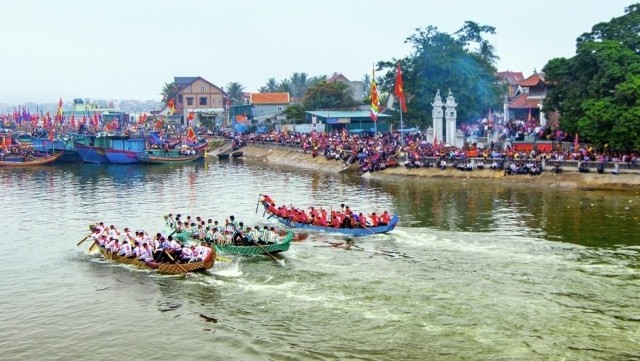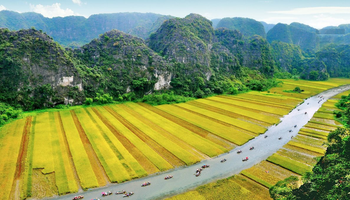Starting from Nghe An
Recently, a symposyum on preserving and promoting cultural heritage values associated with local heritage economic development in the central province of Nghe An has been held in Vinh city, with an aim of consulting experts to complete a project on surveying solutions to promote heritage economic development (pilot in several typical local museums and monuments).
Nghe An has 2,602 relics and scenic spots, with 415 listed as provincial and national ranked monuments, this number is only projected to increase in the future. However, not only in Nghe An but also in many other provinces and cities across the country, instead of becoming a driving force for development, such relics have been a burden for the State and the local communities. Nghe An wants to change that perception. It is the first and only place so far in Vietnam that has decided to approve a plan for its relic system by 2030, with a vision to 2050, in which the concept of "heritage economy" has been mentioned for the first time. It is a new definition not only for Nghe An and Vietnam, but also for the world.
For many developed countries, cultural tourism has become an agent that stimulates tourism efficiency. A 2009 study on cultural and heritage tourism in the US showed that 78% of US visitors participated in cultural activities and/or visited heritages when traveling, up to 118.3 million guests every year. Cultural tourists use an average of US$994 per trip compared to US$ 611 for other types of leisure travellers and contribute about US$192 billion per year to the US economy.
Suggestions for developing heritage economy
Heritage economy needs to be understood as a form of development based on existing values (natural and social values). Heritage in a broad sense, exists in every aspect of life. Digital economy, big data, sharing economy (Uber, Grab), Internet of things, difference of products, creative value and added value are also forms of heritage economy.
The case of Bilbao (Spain) can be mentioned, as a typical example of creating a cause to transform the whole region: from a city that has been almost forgotten, but since the inauguration of the Guggenheim Museum Bilbao in 1997, the number of tourists has increased and reached one million in 2012, about three times the population of the city.
Another experience is the famous Japanese franchise Pokémon. Originating from a video game, derivative products from Pokémon, including comics, movies, toys, cards and home entertainment services, have generated revenues of up to US$90 billion, becoming the best seller media franchise brand of all time.
In Vietnam, the ancient town of Hoi An is also a successful example of good orientation in bringing heritage back to the community, governed by the community and thus serving that community.
So what should be done to transform the heritage economy into a growth driver for a region, a locale, a nation or even the world?
First of all, expertes have said that it is necessary to establish the position of the foundation group and then completing the legal framework and implementing a number of steps, proceeding in three stages (depending on the conditions of each locality):
Phase I: It is crucial to complete research on solutions to developing the heritage economy and putting them in a pilot for some typical relics, heritage and museums that are favourable for calling for investment. It is also important to develop heritage economic projects in sub-regions and localities, with the selection of core relics and heritages that are attractive to guests, combined with promoting investment into tourism and other economic sectors to indirectly invest in conservation and exploitation of heritages. Experts also suggested to develop plans for each key heritage area to attract investors at the selected sites.
Phase II focuses on replication of the model of integrating each heritage with each community to develop typical cultural and tourism products, with the support of the expert community and also the business community. That means promoting linkage between local heritages with the business community and local residents. It also requires to establish mechanisms and policies under specific groups and heritages, while handling over heritages to the community to be responsible for managing and exploiting.
In Phase III, completed privatisation of the conservation work and bringing the heritage economic issues into local universal development programmes is a must.
The concerned organisations, businesses and residents will find their own solutions to develop heritage economy, thus helping promote community-based initiatives and transform them into the country's economic development motivation.
Hopefully, in the near future, the heritage economy will be a new growth engine, creating a breakthrough for the country’s economic development and enhancing the local and national position towards sustainable development with the core is the participation of the whole society.
| Up until now, Vietnam has more than 40,000 relics and landscapes, of which over 3,000 ones are classified as national monuments and 105 among them are special national relics with eight being world heritage sites. |
















